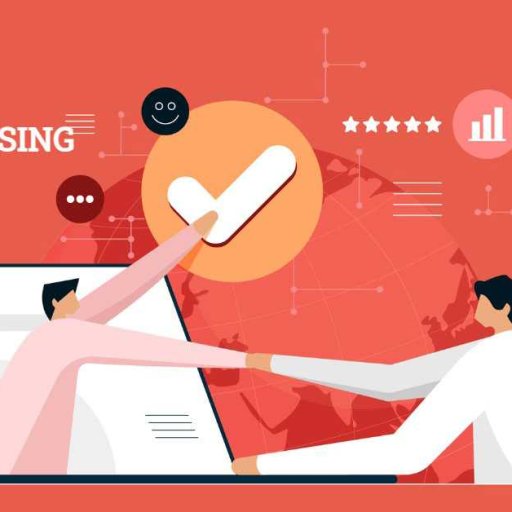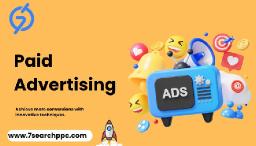

@davidanderson707
X-Niche Advertising Networks: Pros and Cons for Adult Marketers

Avoiding Common Pitfalls in Paid Advertising Campaigns
In today’s digital landscape, businesses have multiple avenues to reach their audience, two of the most prominent being paid advertising and organic marketing. Each approach has its advantages and disadvantages, and understanding them can help you make informed decisions about your marketing strategy. This article delves into the nuances of social advertising, PPC (pay-per-click), native ads, and CPM (cost per mile), comparing paid advertising with organic marketing to help you determine which is best for your business.
Understanding Paid Advertising
Paid advertising encompasses any marketing strategy that involves paying for ad placements. This method includes various formats such as display ads, social media ads, and search engine ads, allowing businesses to reach targeted audiences quickly.
Types of Paid Advertising
- Social Advertising
- Social advertising uses platforms like Facebook, Instagram, Twitter, and LinkedIn to promote products or services. Advertisers can create targeted ads based on demographics, interests, and behaviors, making it a powerful tool for reaching specific audiences.
- Pay-Per-Click (PPC)
- PPC is a model where advertisers pay a fee each time their ad is clicked. Google Ads is the most well-known PPC platform, allowing businesses to bid for ad placements in search engine results.
- Native Ads
- Native advertising blends seamlessly with the content of the platform on which it appears. These ads are designed to match the look and feel of the media format, making them less intrusive and more engaging for users.
- Cost Per Mile (CPM)
- CPM is a model where advertisers pay for every 1,000 impressions their ad receives, regardless of whether it is clicked. This approach is often used in brand awareness campaigns where the goal is to increase visibility rather than immediate action.
Benefits of Paid Advertising
- Immediate Results: Unlike organic marketing, which can take time to yield results, paid advertising can generate traffic and leads almost instantly.
- Targeted Reach: Paid platforms allow advertisers to specify their audience using various targeting options, including demographics, interests, and behaviors.
- Measurable Outcomes: Paid advertising offers robust analytics and tracking capabilities, enabling businesses to measure the effectiveness of their campaigns in real-time.
- Flexibility and Control: Businesses can easily adjust their ad budgets, targeting, and messaging based on performance metrics.
Understanding Organic Marketing
Organic marketing refers to strategies aimed at attracting visitors to a website through unpaid methods. This includes search engine optimization (SEO), content marketing, social media engagement, and email marketing.
Types of Organic Marketing
- Search Engine Optimization (SEO)
- SEO involves optimizing website content to rank higher in search engine results. This is achieved through keyword research, on-page optimization, and backlink building.
- Content Marketing
- This strategy focuses on creating valuable content that attracts and engages an audience. Blogs, videos, infographics, and podcasts are common formats used in content marketing.
- Social Media Engagement
- While social media ads are paid, organic social media marketing focuses on building a community and engaging with followers without spending money on advertisements.
- Email Marketing
- Building an email list and sending newsletters or promotional content is a form of organic marketing. It allows businesses to nurture leads and maintain customer relationships.
Benefits of Organic Marketing
- Cost-Effectiveness: Organic marketing often requires less investment than paid advertising, making it a budget-friendly option for startups and small businesses.
- Long-Term Results: While paid ads can provide immediate traffic, organic strategies can lead to sustainable traffic over time, as high-quality content continues to attract visitors.
- Credibility and Trust: Consumers tend to trust organic content more than ads. Building an authentic brand presence can foster customer loyalty and credibility.
- Engagement and Community Building: Organic marketing emphasizes interaction and engagement, which can help build a loyal customer base and a strong brand community.
Paid Advertising vs. Organic Marketing: Key Comparisons
Cost
- Paid Advertising: Requires a financial investment that can be significant depending on the platform and competitiveness of the industry. Businesses need to allocate budgets for campaigns, which can fluctuate based on performance.
- Organic Marketing: Generally has lower upfront costs. However, it requires time and resources to develop and implement effective strategies, such as content creation and SEO optimization.
Timeframe for Results
- Paid Advertising: Delivers immediate results. Ads can go live within hours, driving traffic and conversions almost instantly.
- Organic Marketing: Takes time to build momentum. It may take weeks or months to see significant results from SEO and content marketing efforts.
Audience Reach
- Paid Advertising: Offers precise targeting capabilities. Advertisers can reach specific demographics and psychographics, allowing for tailored messaging that resonates with the audience.
- Organic Marketing: Audience reach can be limited initially but can expand over time through shares, engagement, and improved SEO rankings.
Branding and Engagement
- Paid Advertising: While it can generate awareness quickly, it may not foster the same level of trust as organic marketing. Users often skip or ignore ads, reducing engagement.
- Organic Marketing: Focuses on building relationships and trust with the audience. Engaging content and interactions can lead to long-term loyalty and brand advocacy.
When to Choose Paid Advertising
Paid advertising is an excellent choice for businesses looking to:
- Generate Immediate Leads: If your business needs quick results, paid advertising can drive traffic and conversions right away.
- Launch New Products: To create buzz around new products or services, paid ads can effectively reach a broad audience quickly.
- Compete in Competitive Markets: In highly competitive industries, paid advertising can help your business stand out and gain visibility against larger competitors.
When to Choose Organic Marketing
Organic marketing is ideal for businesses that want to:
- Build Long-Term Relationships: If your goal is to foster trust and engagement, organic marketing can create lasting connections with your audience.
- Establish Authority: Consistently publishing high-quality content can position your brand as a thought leader in your industry.
- Work with Limited Budgets: For startups and small businesses, organic marketing strategies provide a cost-effective way to promote without the need for significant investment.
Combining Paid and Organic Strategies
Rather than choosing one over the other, many businesses benefit from a hybrid approach that combines both paid advertising and organic marketing. This strategy allows you to leverage the strengths of each method while mitigating their weaknesses.
Integrating Paid and Organic Efforts
- Boosting Organic Content with Paid Ads: Use paid advertising to promote high-performing organic content, driving more traffic and engagement.
- Using Insights to Inform Content Strategy: Analyze the performance of paid ads to understand what resonates with your audience, and use this data to create targeted organic content.
- Retargeting Organic Visitors: Implement retargeting ads for visitors who engage with your organic content but do not convert, keeping your brand top-of-mind.
Measuring Success
Regardless of the strategy you choose, measuring success is crucial. Use analytics tools to track metrics such as:
- Traffic: Monitor website traffic from both paid and organic sources to evaluate overall performance.
- Conversions: Track conversion rates to assess the effectiveness of your campaigns.
- Engagement: Analyze social media engagement metrics to determine how your audience interacts with your content.
Conclusion
Choosing between paid advertising and organic marketing ultimately depends on your business goals, resources, and desired outcomes. Both strategies have their unique advantages and can be powerful tools for boosting your brand’s visibility and engagement. A balanced approach that incorporates both paid and organic tactics can maximize your marketing efforts, ensuring immediate traffic while building long-term relationships with your audience. By understanding the nuances of each method, you can develop a comprehensive strategy that aligns with your business objectives and drives success in the competitive digital landscape.
FAQs
What is the main difference between paid advertising and organic marketing?
Ans. Paid advertising involves paying for ad placements to reach an audience quickly, while organic marketing focuses on unpaid methods to attract visitors through valuable content and engagement.
Can I use both paid advertising and organic marketing together?
Ans. Yes, many businesses benefit from a combined approach, leveraging the immediate results of paid advertising alongside the long-term benefits of organic marketing.
How do I choose between paid advertising and organic marketing?
Ans. Consider your business goals, budget, and timeline. Paid advertising is suitable for immediate results, while organic marketing is ideal for building long-term relationships and authority.
What are some common paid advertising platforms?
Ans. Common paid advertising platforms include Google Ads (for PPC), Facebook Ads, Instagram Ads, Twitter Ads, and LinkedIn Ads.
How long does it take to see results from organic marketing?
Ans. The timeline for results from organic marketing can vary, but it typically takes several weeks or months to build momentum and see significant traffic or engagement.




